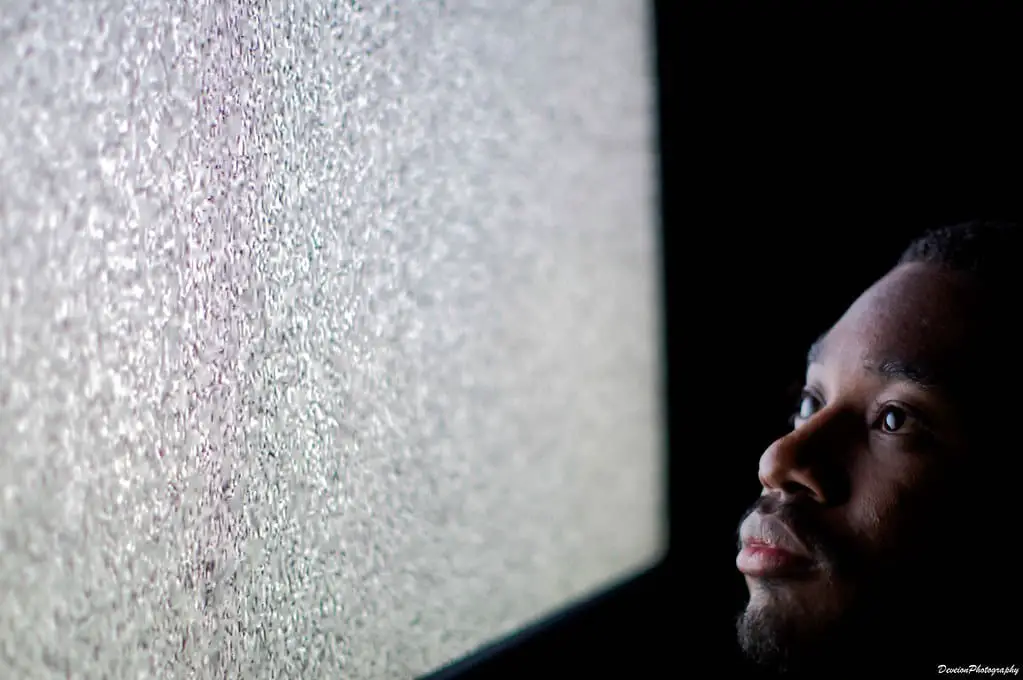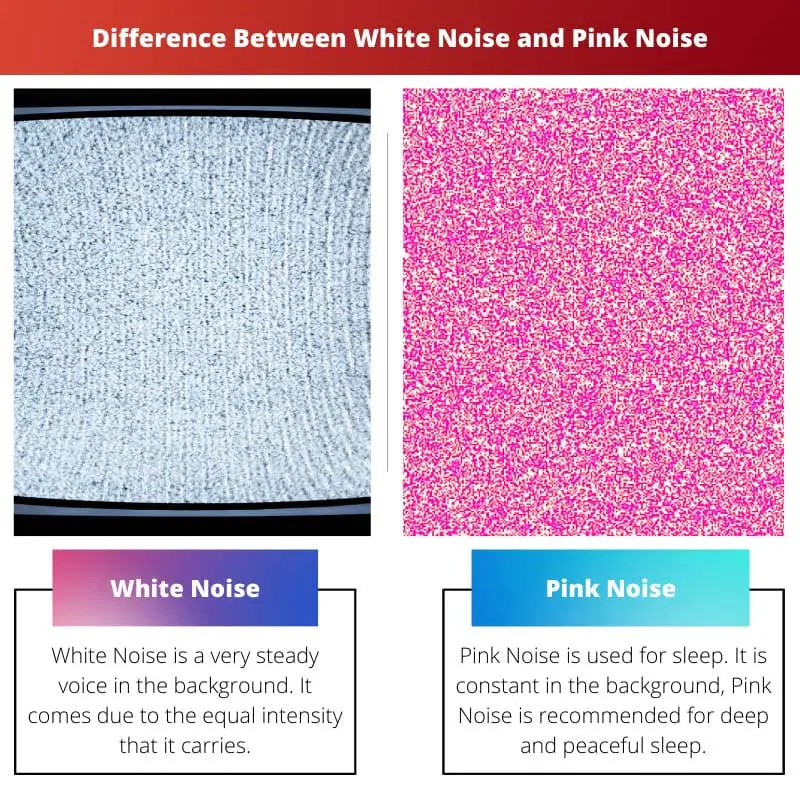The color of noises is an interesting topic to discuss. The first one was named White Noise due to the resemblance of the power spectrum.
Different noises are found out to have different qualities, and they are named accordingly.
However, except for pink and brown, there are other colors too. All of them are not in accordance but are named informally.
To know about them individually, let us dive into some details. In this article, we shall learn the features of White Noise and Pink Noise.
Key Takeaways
- White noise contains equal power across all frequencies, resulting in a constant hiss, while pink noise has equal power per octave, making it sound more balanced to the human ear.
- White noise can help mask sudden, distracting sounds and improve concentration, while pink noise is used for audio testing and calibration due to its even distribution.
- Both white and pink noise can aid in relaxation and sleep, but pink noise is preferred for its more soothing, natural sound.
White Noise vs Pink Noise
The difference between White Noise and Pink Noise is the amount of energy they carry within each frequency. White Noise is known to carry an equal amount of energy in total with each frequency. In contrast, Pink Noise is known to carry an equal amount of energy in total with each octave. A doubling frequency is referred to as an octave.

White Noise is a very steady voice in the background. It comes due to the equal intensity that it carries. It does not refer to any specific signal.
Its name has been derived from white light since it possesses similar properties. The samples of White Noises are sometimes sequential in time.
On the other hand, Pink Noise is used for sleep. It is constant in the background, Pink Noise is recommended for deep and peaceful sleep.
It is very effective, and it feels relaxing. However, the working of Pink Noise and to what extent it helps in sleeping is not yet known. It has low wave filters and also added depth.
Comparison Table
| Parameters of Difference | White Noise | Pink Noise |
|---|---|---|
| Energy Content | Contains equal energy per octave. | Contains more energy in the lower frequency. |
| Depth | It is lighter than the Pink Noise. | It is deeper than the White Noise. |
| Frequency | It has a higher frequency. | It has a lower frequency. |
| Origin | The sound is generated from electronic devices. | The sound is generated from nature. |
| Example | When we connect the resistor to an amplifier. | The sound of the waterfall. |
What is White Noise?
White Noise is the combination of the different frequencies of sound. In other words, we can say it is like hearing all the sounds at the same time.
It is known to help us sleep. This is because it has a property by which it can hide unwanted sounds. To be precise, their intensities are of the same frequency.
We as well, might be curious about the name. There is a name for why this condition is linked with the name of a color. It came from the reference to the white spectrum of light. It is analogous to the same, which is a combination of visible wavelengths of light.
When the White Noise is played in the background, it hides and distracts the other unnecessary sounds. This is an interesting feature that it carries.
However, the extremely high frequencies can be fatiguing to some ears. However, it is advised not to leave white noise throughout the day or night. It is not considered a very healthy option.
It is referred to as a signal or a process. However, the signal has constant power at any given point. There is also a term known as noisy white.
It is different from the normal one and is also disturbing. The spectral density of white noise is zero.

What is Pink Noise?
Pink Noise is used in acoustics and audio production. It is considered the best choice for this purpose.
This is because it can perceive the frequencies on a logarithm scale. Hence it is well related to the human perception of sound.
In acoustic measurements, maximum tests are detected to be octaves. Hence, it needs to be tested with equal energy per octave.
These criteria seem to match with the features of pink noise. This is the reason pink noise is preferred.
The spectral density for Pink Noise is 1. The equal power octave mentioned earlier is a doubling frequency. Each octave carries the same amount of energy.
This is why it is perceived all the same despite its real frequency. They have a deeper noise and are generated in nature.
While we sleep, Pink Noise amplifies brain waves’ power. This, in turn, results in peaceful and deep sleep.
It has potential, which is as powerful as sleeping aids. It is also proven to calm anxiety. Examples of Pink Noise include heartbeat, waterfall, falling leaves, rainfall, etc.

Main Differences Between White Noise and Pink Noise
- The main difference between White Noise and Pink Noise is their energy content. White Noise contains equal energy per octave. In contrast, Pink Noise contains more energy in the lower frequency.
- White Noise is lighter than Pink Noise. However, Pink Noise is deeper than White Noise.
- In White Noise, the sound is generated from electronic devices. On the other hand, in Pink Noise, the sound is generated from nature.
- The frequency creates a distinct difference between the two as well. White Noise has a higher frequency. However, Pink Noise has a lower frequency.
- Last but not least, examples. An example of White Noise is when we connect the resistor to an amplifier. Similarly, an example of Pink Noise is the sound of the waterfall.

- https://iopscience.iop.org/article/10.1088/1741-2552/abe399/meta
- https://www.jstage.jst.go.jp/article/indhealth1963/31/1/31_1_35/_article/-char/ja/

Interesting, but I think there are still many things to explore in this area.
Definitely, the field offers plenty of research opportunities.
The topic is quite fascinating. I really enjoyed this!
Nicely explained, but I was hoping for a bit more depth in the explanation.
The article made some good points, but it felt a bit dry for my taste.
This was a fascinating read; by far the best explanation of the topic I’ve seen.
Yes, I agree. The article was highly informative.
I fail to see the importance of this subject. This was a waste of time.
I think the importance lies in the study’s potential applications.
You clearly don’t understand the significance of different noise colors in various fields.